Last updated on
Discover simple and effective steps to organize recycling in a small kitchen, making eco-friendly living easier than ever.
Recycling is an important aspect of our daily lives that not only helps us reduce waste but also minimizes the impact on the environment. However, for those living in small apartments or houses, finding space to organize recycling can be a challenge.
The kitchen is usually the busiest area in any home, and it’s essential to have a system in place that works efficiently without taking up too much space. In this article, we’ll explore some practical tips and tricks on how to organize recycling in a small kitchen and make it easy for you to do your part for the planet.
So let’s dive right into it!
Key takeaways:
- Assess available kitchen space for recycling bins placement.
- Consider size, compartments, and aesthetics when choosing recycling bins.
- Utilize under-sink space and vertical storage solutions for bins.
- Separate recyclables by material and label bins for easy sorting.
- Educate household members, establish a recycling schedule, and keep the area clean.
What's Inside
Assessing Kitchen Space
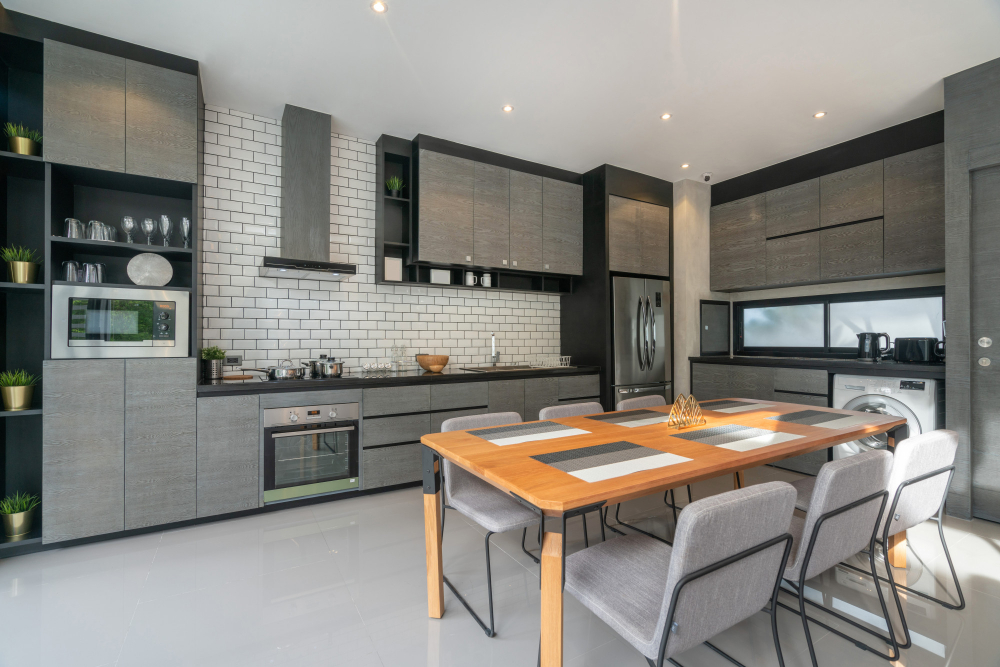
The first step in organizing recycling in a small kitchen is to assess the available space. Look around your kitchen and identify areas where you can place recycling bins without causing any inconvenience or taking up too much space.
Consider using under-sink cabinets, pantry shelves, or even countertop corners for storing your recyclables.
If you have limited floor space, consider stacking bins vertically to maximize storage capacity while minimizing the footprint of each bin. You may also want to choose smaller-sized containers that fit snugly into tight spaces.
It’s important to keep in mind that every kitchen is different and what works for one person may not work for another. Therefore, it’s essential to take stock of your specific needs before deciding on a system that will work best for you.
Recycling Bins Selection

There are many options available on the market, and choosing one that fits your needs can be overwhelming. However, there are some factors you should consider when making your selection.
Firstly, think about how much space you have available for storing the bins. If you have limited space in your kitchen or pantry area, look for compact and stackable containers that won’t take up too much room.
Secondly, consider what materials you will be recycling most frequently and choose a bin with appropriate compartments accordingly. For example: if paper products make up most of your recyclables then select a bin with larger capacity for papers than plastics or glass items.
Lastly but not least important factor is aesthetics; choose something that matches well with other decor elements of the kitchen so it doesn’t stand out like an eyesore!
Choosing Appropriate Recycling Containers
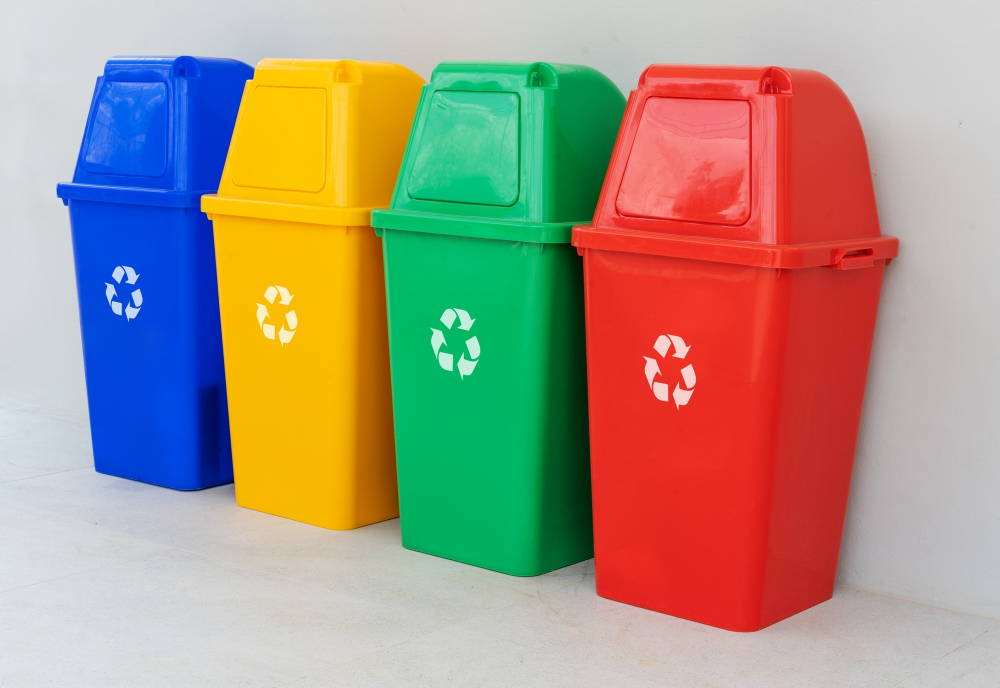
First and foremost, the size of your kitchen will determine how many and what type of bins you can accommodate. If space is limited, look for compact options that can fit under counters or in cabinets.
Another important consideration is the material of the container itself. Plastic bins are lightweight and easy to clean but may not be as durable as metal or wood options.
Glass jars or containers can also be repurposed from food packaging.
It’s also essential to choose separate bins for different types of recyclable materials such as paper, plastic, glass, aluminum cans etc., so sorting becomes easier when disposing waste products into their respective bin.
Lastly make sure that your chosen recycling container has a lid which helps keep odors at bay while keeping pests away from getting inside them.
Location Options for Recycling Bins

You want to make sure that they are easily accessible and don’t take up too much space. One option is to place them under the sink or in a cabinet next to it.
This way, you can keep them out of sight while still having easy access when needed.
Another great location option for recycling bins is near your trash can or compost bin if you have one. This makes sorting waste more convenient and encourages everyone in the household to recycle properly.
If you have limited floor space, consider using vertical storage solutions such as stacking bins on top of each other or hanging them on walls with hooks or brackets.
Ultimately, finding the perfect spot for your recycling containers will depend on your specific kitchen layout and personal preferences.
Utilizing Under-Sink Space for Recycling
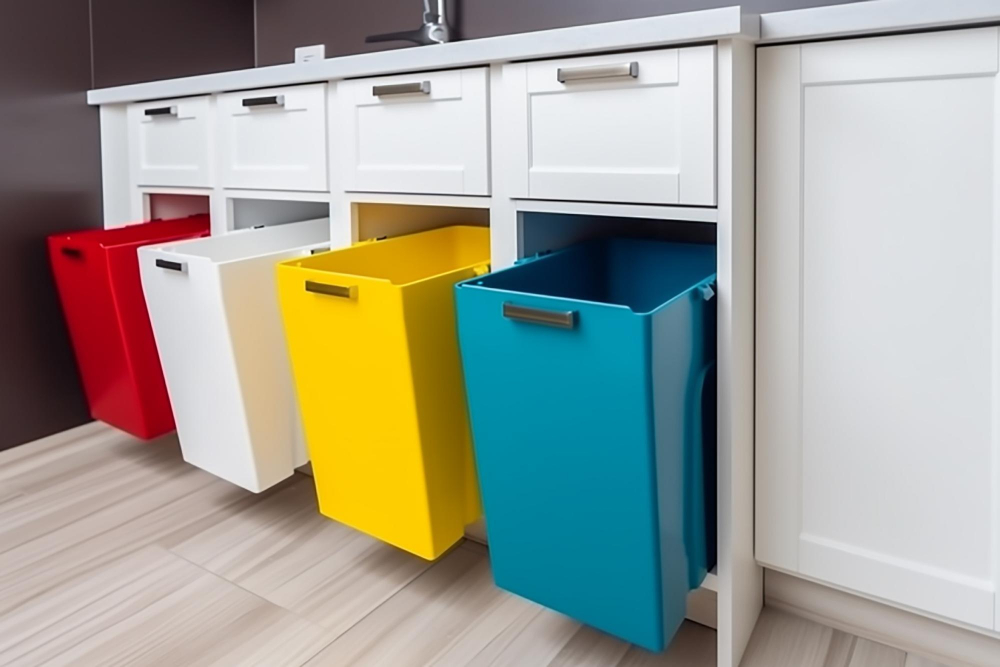
This space can be used to store recycling bins and containers, making it an ideal location for those who want to keep their recycling out of sight. To make use of this space, measure the height and width available beneath your sink cabinet before purchasing any bins or containers.
There are many different types of recycling bins that fit perfectly into this area, including stackable options that allow you to separate recyclables by type without taking up too much room. You can also find slimline models designed specifically for tight spaces like these.
If you have a larger family or generate more waste than average, consider investing in a pull-out bin system with multiple compartments that slide out from underneath your sink cabinet when needed but remain hidden away when not in use.
Stacking Bins for Vertical Storage
Stacking bins can be an excellent solution for those who have limited floor space but plenty of wall or shelf space available. By stacking the bins on top of each other, you can create a compact and efficient storage system that doesn’t take up too much room.
One option is to use stackable recycling containers with lids that snap together securely. These types of containers are usually made from durable plastic and come in various sizes depending on your needs.
You could also consider using wire baskets or mesh bags which allow you to see what’s inside without having to open them.
To make the most out of your vertical storage system, place heavier items at the bottom and lighter ones at the top so that they don’t topple over easily. Label each bin clearly so everyone knows where everything goes.
Single Stream Vs Multi-Stream Recycling

One important consideration is whether to opt for single-stream or multi-stream recycling bins.
Single stream recycling involves placing all recyclable materials into one container, which are then sorted at a later stage by specialized facilities. This method can be more convenient and easier for households with limited space as only one bin is required.
On the other hand, multi-stream recycling requires separating different types of recyclables such as paper, plastic and glass into separate containers before collection. While this may require more effort on your part initially when setting up your system, it can lead to higher quality recycled materials that are less likely to end up in landfills due to contamination issues.
Ultimately the choice between single stream vs multi-stream depends on personal preference and local regulations regarding waste management practices.
Labeling Recycling Bins
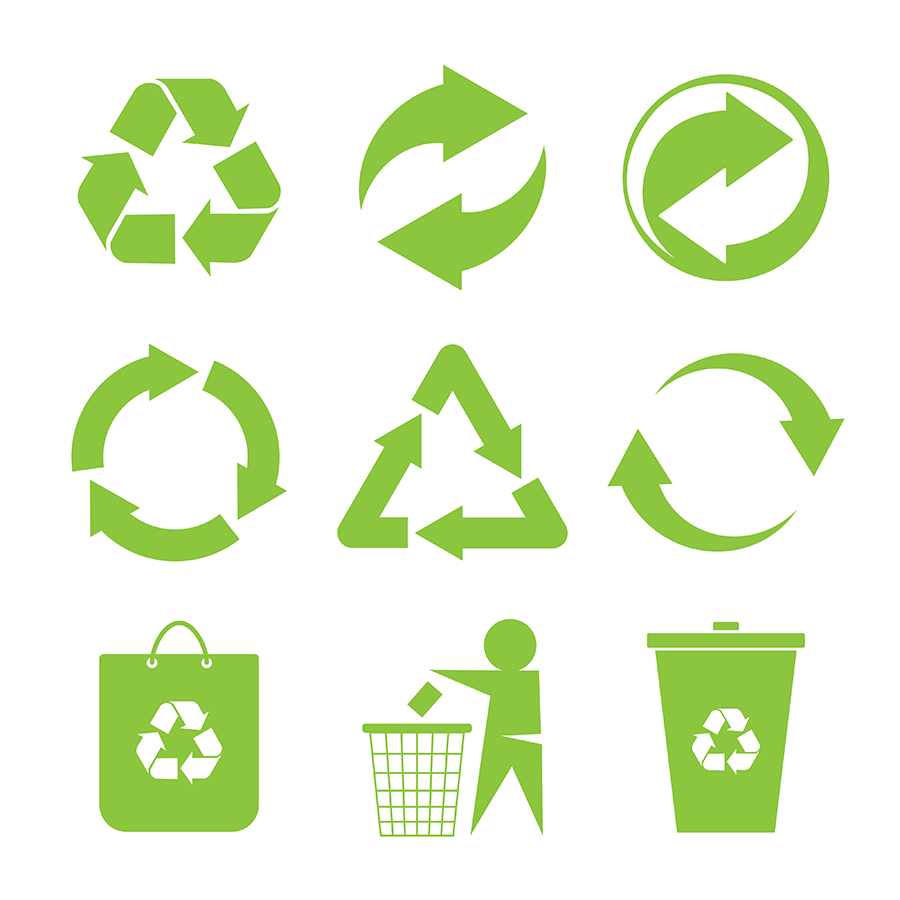
Labeling your bins will help you sort recyclable materials more efficiently and avoid confusion among household members or guests.
You can use stickers, markers, or even paint to label your recycling bins. Make sure that the labels are visible from a distance and easy to read.
You can also color-code your bins for different types of recyclables such as paper products, plastics, glass bottles & jars.
If you have children in the house who are learning about recycling for the first time or guests who may not be familiar with what goes where; labeling is especially important. It helps everyone understand which bin is meant for what type of material so they can dispose of waste properly.
Sorting Recyclable Materials

Sorting is an essential step in the recycling process as it ensures that materials are properly processed and recycled into new products. It also helps reduce contamination, which can lead to rejected loads of recyclables.
To make sorting easier, consider setting up separate bins or bags for different types of materials such as paper, plastic bottles and containers, glass jars and bottles or aluminum cans. You may also want to check with your local waste management facility on what specific items they accept for recycling.
It’s important not to mix non-recyclable items with those that can be recycled since this could contaminate the entire batch making it unsuitable for processing. For example; food waste should never be mixed with other recyclables since this could attract pests like rodents or insects leading to health hazards.
Indoor Vs Outdoor Storage Solutions
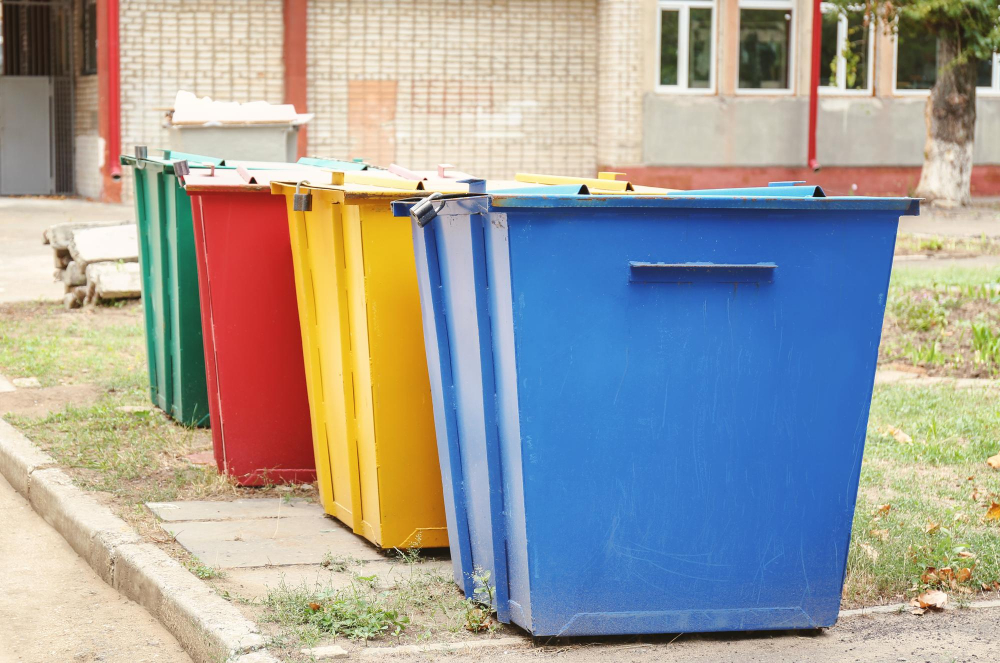
While outdoor storage may seem like the obvious choice for those with limited indoor space, there are some factors that you should keep in mind before making a decision.
Outdoor storage can be ideal if you have access to a balcony or patio where you can place your bins. This option frees up valuable indoor space and keeps any odors associated with recycling outside of the home.
However, outdoor storage also means that you’ll need to transport your recyclables from inside the house every time they need emptying.
On the other hand, storing recycling containers indoors provides easy access and eliminates any concerns about weather conditions affecting waste disposal schedules. Indoor solutions such as under-sink cabinets or pantry shelves allow for convenient sorting and disposal without having to leave home.
Ultimately, choosing between indoor versus outdoor storage depends on personal preference and available space constraints within each household’s unique situation.
Recycling Storage Solutions
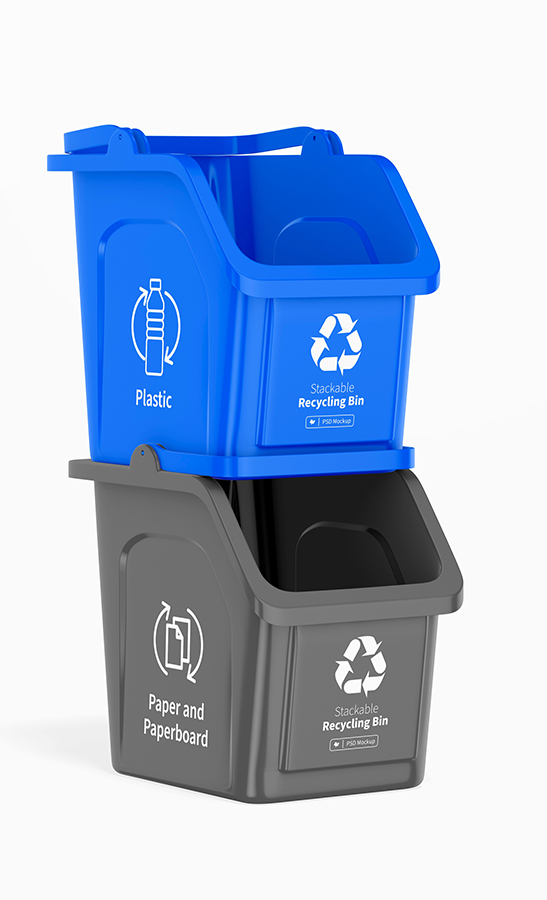
There are many options available that can help you maximize your space and keep your recyclables organized. One popular solution is using stackable bins for vertical storage.
These bins come in different sizes and colors, making it easy to sort materials by type or category.
Another option is utilizing pantry space for recycling storage. You can install pull-out drawers or shelves specifically designed for storing recycling containers inside the pantry cabinet doors or on the floor of the pantry itself.
If you have limited floor space, consider wall-mounted racks that hold multiple containers at once while keeping them off the ground and out of sight.
Lastly, don’t forget about repurposing items as creative DIY solutions! For example: an old wine rack could be used as a holder for glass bottles; cardboard boxes could be cut down into smaller compartments to store cans; mason jars with lids make great holders for small items like bottle caps or plastic utensils.
Utilizing Pantry Space for Recycling Storage

Pantries are usually located near the kitchen and provide ample storage space for various items. You can use stackable bins or containers that fit perfectly on shelves to organize recyclables such as paper, plastic, glass, and metal cans.
To make the most of your pantry space for recycling storage:
- Measure the available area before purchasing any containers.
- Choose stackable bins or baskets that fit well on shelves.
- Label each bin with its designated material type (e.g., “plastic,” “glass”).
- Keep heavier materials at lower levels to avoid accidents.
- Utilizing pantry space is especially useful if you don’t have much floor or counter space in your small kitchen. It’s also a great way to keep recyclables out of sight while still being easily accessible when needed.
Composting in a Small Kitchen

Composting may seem like it requires ample space, but even those with small kitchens can participate in this sustainable practice.
One option is using countertop compost bins that are compact and easy to use. These containers come in various sizes and styles, making them perfect for any kitchen decor or size.
Another option is vermicomposting or worm composting which uses worms to break down food scraps into rich fertilizer quickly. This method doesn’t require much space as the worms can live comfortably under the sink or on a shelf.
Remember that not all food scraps should be added to your compost bin; avoid adding meat products, dairy items, oils/fats/grease as they attract pests and slow down decomposition process while producing unpleasant odors.
Terracycling in the Kitchen
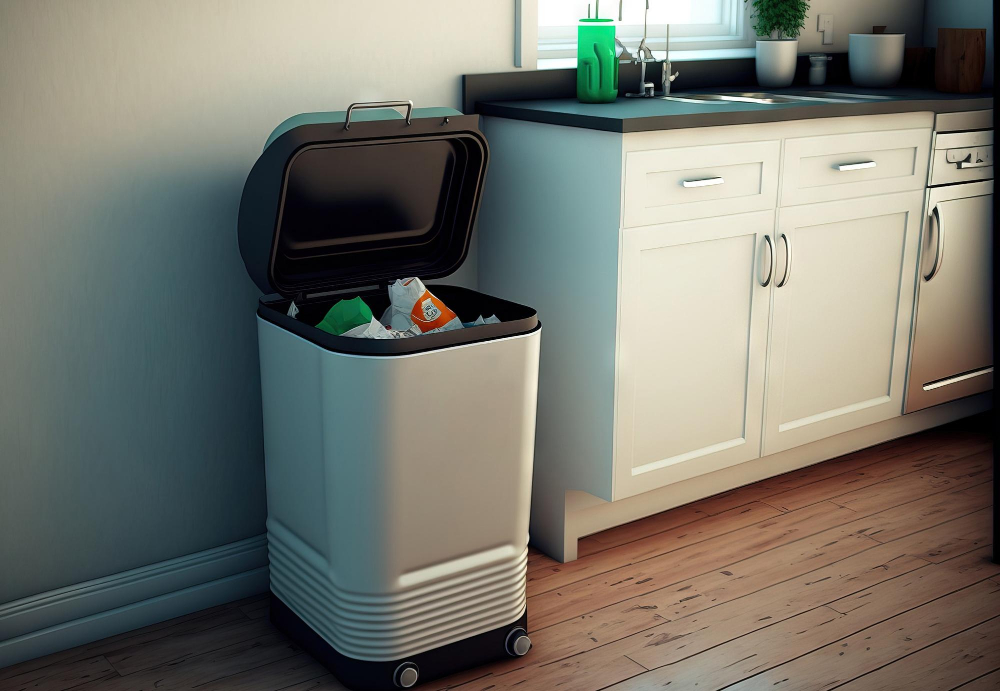
Terracycle is a company that specializes in recycling hard-to-recycle materials such as chip bags, candy wrappers, and coffee capsules. They have partnered with various brands to create collection programs where consumers can send their waste directly to them.
To terracycle in the kitchen, designate a small container or bin for these types of items and educate household members on what should go into it. Once full, simply ship it off using one of Terracyle’s free shipping labels available on their website.
Repurposing Containers
Instead of buying new bins, you can use old containers that are no longer in use. For example, an empty coffee canister or a large plastic container with a lid could be used as storage for recyclable materials such as paper and cardboard.
You could also reuse glass jars to store smaller items like bottle caps or batteries before taking them to the recycling center. This not only saves space but also reduces waste and helps keep your kitchen organized.
When repurposing containers for recycling purposes, make sure they are clean and free from any residue that may contaminate other recyclables. Label each container clearly so everyone knows what goes where.
Reusable Bags and Packaging

Instead of buying single-use plastic bags, opt for reusable ones made from materials like cotton or canvas. These can be used multiple times before needing to be replaced, reducing the amount of plastic waste that ends up in landfills.
Similarly, when shopping for groceries or other household items, bring your own reusable containers instead of relying on disposable packaging provided by stores. Many grocery stores now offer bulk sections where you can fill up your own containers with items like grains, nuts and dried fruits.
Educating Household Members

Make sure that everyone knows what can be recycled, where to put each item, and when collection day is. You can also encourage your family members to reduce waste by using reusable bags and containers instead of disposable ones.
If you have kids at home, make recycling fun for them by turning it into a game or challenge. For example, you could create a chart with different recyclable items on it and see who can find them all first.
By educating your household members about recycling practices, they will become more aware of their impact on the environment.
Recycling Schedule
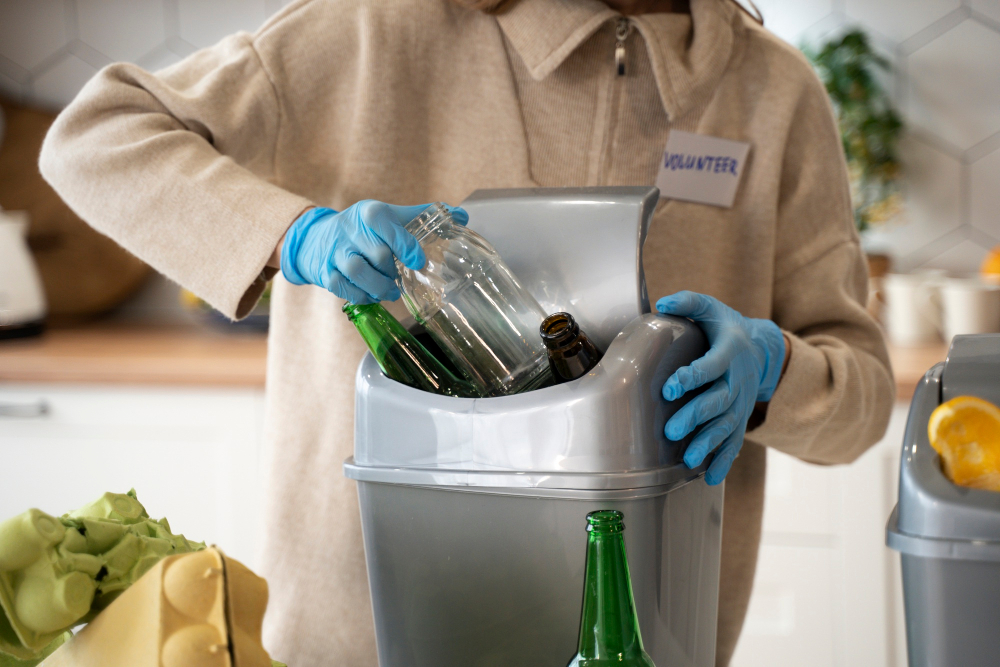
A regular routine will help keep your kitchen organized and prevent any unpleasant odors or overflowing bins. Depending on how much waste you generate, consider scheduling a weekly or bi-weekly pickup with your local recycling center.
If you live in an apartment complex that provides communal recycling bins, check with the management about their collection schedule. It’s also helpful to know what items are accepted by the facility so that you can sort them accordingly.
In addition to setting up a pickup schedule, make sure everyone in the household is aware of it and follows through with proper disposal practices. You may want to assign specific tasks such as taking out the recyclables or checking if they need sorting before placing them into designated containers.
Keeping the Area Clean

A cluttered space can be unappealing and may discourage household members from using it. Make sure to wipe down bins regularly with a damp cloth or disinfectant wipes to prevent any odors or bacteria buildup.
It’s also important to ensure that recyclables are placed in their designated containers correctly. Avoid mixing different materials as this can contaminate them, making them unsuitable for recycling.
Lastly, make sure that all waste is disposed of properly by following local regulations on garbage disposal and recycling guidelines.
Waste Reduction Tips
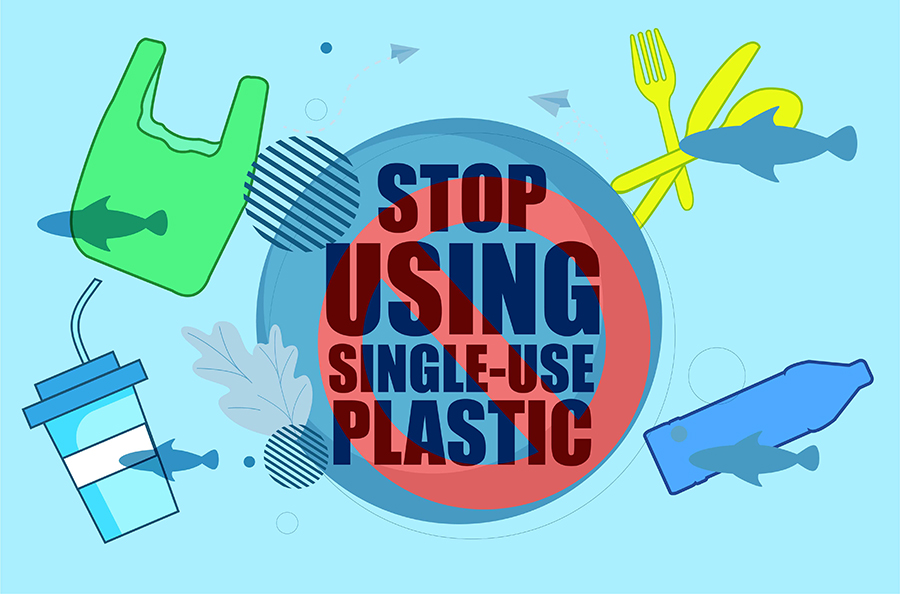
Here are some tips on how to reduce waste in your small kitchen:
1. Buy in Bulk: Purchasing items like grains, nuts, and spices in bulk can help you save money while reducing packaging waste.
2. Use Reusable Containers: Instead of using disposable containers for food storage or takeout orders, opt for reusable containers that can be washed and used again.
3. Compost Food Scraps: Composting is a great way to turn food scraps into nutrient-rich soil that can be used for gardening or potted plants.
4. Say No To Single-Use Plastics: Avoid single-use plastics like straws, utensils, bags by opting for reusable alternatives such as metal straws or cloth bags.
5. Repurpose Leftovers: Get creative with leftovers by turning them into new meals instead of throwing them away.
By incorporating these simple tips into your routine along with organizing recycling bins effectively will not only help you reduce the amount of trash but also contribute towards creating a sustainable environment!
FAQ
Where do you put the recycling bin in a small kitchen?
In a small kitchen, place the recycling bin in the cleaning zone, away from fresh food but close to the exit for easier disposal and recycling.
What are some space-saving options for recycling bins in a small kitchen?
Some space-saving options for recycling bins in a small kitchen include stackable containers, under-sink bins, and hanging systems.
How can you effectively separate recyclable materials with limited space in the kitchen?
To effectively separate recyclable materials with limited kitchen space, consider using a multi-compartment bin or stackable containers to optimize space while keeping materials organized.
Are there any stackable recycling bins suitable for small kitchens?
Yes, there are stackable recycling bins suitable for small kitchens.




